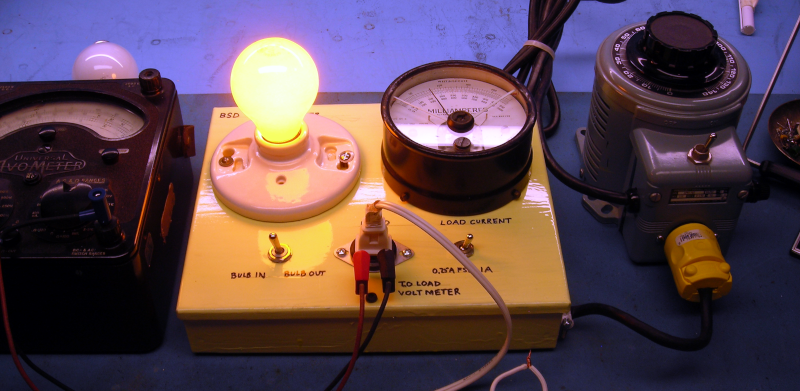
If you work on old equipment, you know that there’s always that tense moment when you first plug it in and turn it on. No matter how careful you have been, there’s some chance your garage sale find is going to go up in smoke. [BasinStreetDesign] built a little box that can help. On one side is a variac and the device you want to test goes into the other side.
In the middle? A lightbulb, a few switches, and a meter to monitor the current. The magic happens because the lightbulb will stay relatively cool and only light dimly if the device under test is drawing an appropriate amount of current. You match the bulb wattage with the approximate watts you expect the load to draw. If the device’s power is shorted to ground, though, the bulb will light brightly and this causes the lightbulb’s resistance to increase, thus helping to protect the device.
Of course, this is an old idea but we liked the construction method and the inclusion of a variac. The ammeter is great, and there is a connection for an external voltmeter that has some short-circuit protection. We might have opted for a second built-in voltmeter. The analog meters add to the old-school ambiance, but digital meters could be interesting and are easy to find these days.
Be sure you match the lightbulb wattage to your load. If the bulb is too small, it will light anyway. Think of it as a voltage divider. If the bulb is too small, it will have a higher resistance than the radio and get most of the voltage across it, leaving very little for the test device. If it is a higher-wattage bulb, it will have a lower resistance and the radio will take most of the voltage. In either case, the current through will depend on both resistors. If the radio is shorted, or nearly so, its resistance will be close to zero and that’s why the bulb will light brightly.
If you want a more classic build along with suggested test procedures and tips, there’s a good article over on antiqueradio.org. If you do decide to go with digital displays, consider a steam punk aesthetic like [Christine’s] radio project. Or, you could overengineer the variable transformer.
No comments:
Post a Comment